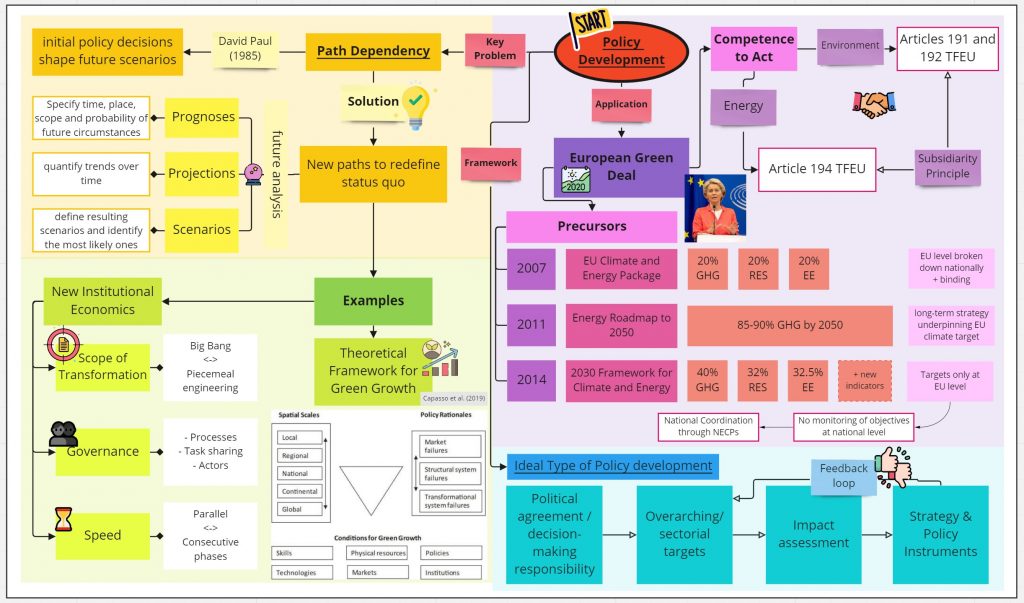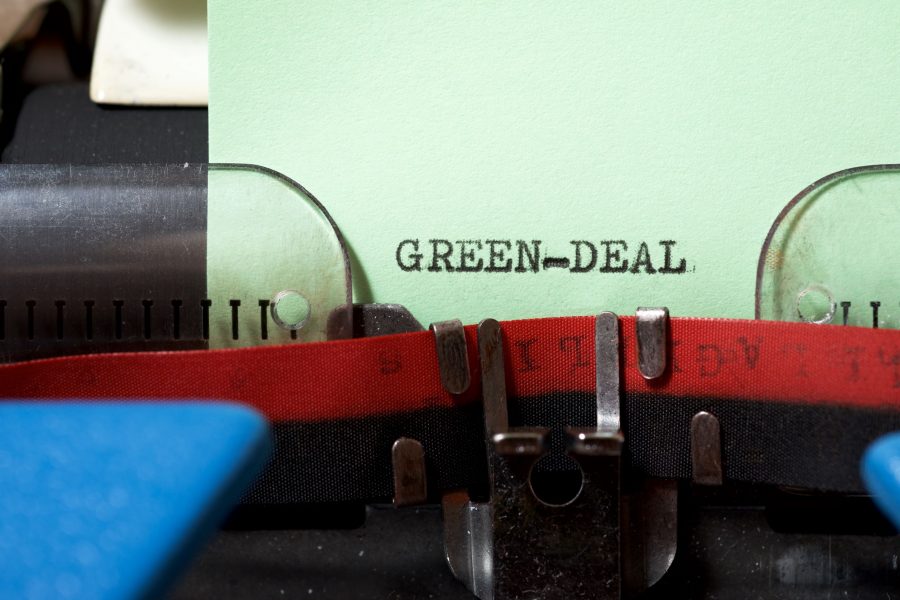
Understanding the background of Green Deal(s)
13 September 2022
Séminaire Politiques climatiques et énergétiques du “Plan Vert” européen
14 September 2022By Chloe Costa, Malena Ullrich, and Maria Callewier
The European Green Deal is aimed at improving social well-being, economic development, and environmental protection through the concept of green growth. However, for these goals to be achieved, the European Union and its Member States must first depart from the traditional status quo and redefine new paths towards green and sustainable growth. Hence, it is crucial to conduct prognoses, projections, and develop scenarios to select the appropriate paths. In order to construct a comprehensive framework for green growth, and thus for the European Green Deal, it is necessary to consider the scope of transformation, the necessary governance structures, the speed, and the impacts of these interventions.
The European Green Deal did not appear out of thin air. Indeed, it derives its legitimacy and competence to act from Articles 191, 192, and 194 TFEU. Moreover, it is the product of a culmination of predecessors developing similar ideals. The EU Climate and Energy Package (2007), the Energy Roadmap to 2050 (2011), and the 2030 Framework for Climate and Energy (2014) all outline similar goals. Yet, these precursors are far from perfect. For instance, although the 2030 Framework may set up ambitious goals for some, its targets remain EU-level targets. This results in significant discrepancies amongst nations in regards to their contribution and renders monitoring very difficult.



